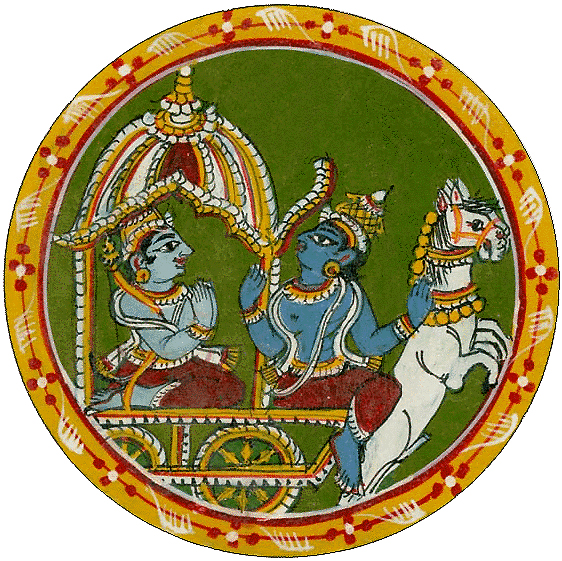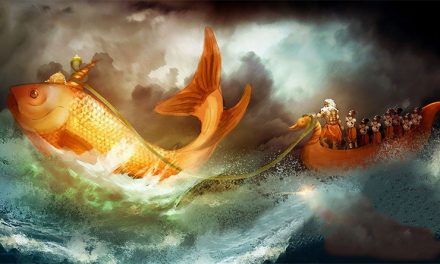
Our ancient literature was essentially pan-Indian in character. As such, all Indian languages descend from only two sources: the Indo-Aryan and the Dravidian. Obviously, both Oriya and Assamese share their common origin from the Indo-Aryan stream. Further, as Dr. Grierson argues, Oriya, Bengali and Assamese are the three languages that have emerged from one common source: the Magadhan element, called Magadhi Apabhramsa. As Grierson asserts:
“Each of the three descendants of Magadhi Apabhramsa (Oriya, Modern Bengali and Assamese) is equally and directly connected with the common immediate parent. (Linguistic Survey of India, Vol. I, Part I, quoted by B. Barua, 56). If we examine it, we find “the vocabulary of Assamese is largely derived from that of Sanskrit and its morphological structure is also based on Sanskrit grammar”. (Biranchi Barua, 8)
Further, Assamese, being a living and growing language, has borrowed a great number of words from other new Indo-Aryan Languages.
While Oriya language begins taking shape, sense and vigour in the 14th century, Assamese began more than a century earlier. The entire credit goes to a progressive, highly sensible king called Durlabhanarayana, who ruled towards the late 13th, early 14th century. During his reign a celebrated Assamese poet, Madhava Kandali, translated Valmiki’s Ramayana into Assamese, while the versions of Ramayana in Hindi, Bengali and Oriya appeared about a century and a half later.
But as far as the regionalization of Vyasa’s magnum opus, the Mahabharata, is concerned, the scenario changes sharply. While Sarala Dasa rendered the original Mahabharata in Sanskrit into Oriya in the 15th century, Rama Saraswati, the earliest and foremost Vaisnavite poet in Assam, translated the major portion (not complete) of the Mahabharata a full century later, i.e., in the 16th Century. Both the Oriya and the Assamese version of the Mahabharata by Sarala Dasa and Rama Saraswati show brilliant parallels at multiple levels. The study of those parallels, therefore, appears fascinating and meaningful.
Though Vyasa’s original Sanskrit Mahabharata remains the raisond’être of Sarala’s Mahabharata in Oriya, it is not at all a translation of the former, nor even written in the shadow of it. Rather, Sarala’s epic stands out as an independent, autonomous piece of art on its own merit. Both structurally and otherwise, Sarala’s Oriya Mahabharata is a creative work of art, which is some measure may compare in its brilliance and endurance to the original Sanskrit one.
As we observe, Sarala not only makes it a point to break away from the Sanskrit original both in structure and spirit, he unequivocally gives voice to protest against the monopoly, orthodoxy and authoritarianism of the Brahmins down the ages. Mr. Gadadhar Mishra gives a comparative account of the composition of Mahabharata in different regional languages. While Sarala wrote in late 15th century, Kasiram, Rama Saraswati, Ramanujam and Mukteswar wrote Mahabharata in Bengali, Assamese, Malayalam and Marathi respectively during the 16th century, and Gokulnath wrote the epic in Hindi a full two centuries after, i.e. 18th century (110).
A closer examination of Salara’s epic would expose marks of subversion which, in all probability, Sarala did consciously, deliberately. The theme of subversion in the Sarala Mahabharata occurs at many levels and surfaces in many ways. It is worth noting that the Assamese Mahabharata of Kavi Rama Saraswati is not a literal rendering of the original epic. As a sensible critic B. Barua comments:
“Through compression, omission, alteration, innovation and adaptation, the Assamese version emerged as an epic of the soil.” (55)
It is interesting to note that Sarala Dasa while writing his Mahabharata not only made Oriya lingua-franca his own mode of writing, he gave a touch of realism to it. Hence we find numerous instances of this mix up in the Oriya Mahabharata; the anecdotes are drawn extensively from Oriya tradition, custom and folklore.
An interesting pattern emerges from here. The Sarala Mahabharata, being the pioneering work in the process of regionalization of the great Indian epic, became a trend-setter, a path-finder for both the Assamese Mahabharata composer Kavi Rama Saraswati and the Bengali Mahabharata composer Kasiram, who wrote in the 16th century. And of course, Gokulnath followed these two in his rendering of the epic into Hindi in the 18th century.
The noted historian Suniti Chatterjee is of the opinion that both the Bengali and the Assamese Mahabharata were heavily influenced and inspired by Sarala Dasa’s. Yet another historian B.C. Majumdar asserts:
“It is very remarkable that this Oriya poet acquired celebrity in Bengal and Assam as well where the Mahabharata was introduced not later than the early part of the 16th Century.” (A Typical Selection from Oriya Literature, Vol. I quoted by Mishra Gadadhar, 108).
Highlighting the originality and profundity of Sarala’s Mahabharata, Winternitz, an internationally famous Indologist, believes that to call the Sarala Mahabharata an epic is an understatement. In his opinion it is not simply an epic but it “represents more of an entire literature than a single and unitary work and contains so much and so many kinds of things”. (History of Indian Literature Vol. I & II, 305)
[One must be very clear about the fact that none of these restated epics are the true form of Srila Vyasa’s unadulterated, pure Mahabharata, as further evidenced by the descriptions that follow.]
All the three great poets (Sarala, Rama Saraswati, and Kasiram), maintain the external structure of the original Sanskrit Mahabharata of Vyasa. But they skipped and added within the structure to give free play to their imagination and local flavor. Among them, of course, Sarala Dasa was the most prolific and versatile, creating a world of his own against the backdrop of the original epic’s broad story and structural outline. He remains faithful to the plot of Vyasa insofar as he maintains the eighteen cantos of the original. But once one gets into Sarala’s edifice, one will be shocked and surprised to see the his imaginative tapestry. To local Oriyans, of course, the originality of his digressions and interpolations are thought incredible. One insightful critic, however, highlights Sarala’s deviations from the original schemata:
“He has disposed of the entire Srimad Bhagavad Gita by only making a reference to it in two verses. He has omitted the long discourse delivered to Yudhisthira by Bhisma in the Santi Parva. His Madhya Parva containing about fifteen thousand verses is in reality a new Parva, though it contains some topics of the Adi Parva of the Sanskrit original. In the original Sabha Parva the conquests (Digvijaya) of the Pandavas on the occasion of their Rajasuya Sacrifice have been described in 218 verses, but Sarala Dasa’s Sabha Parva devotes the major part of the thirteen thousand verses to the description of their exploits on the same occasion. Pandit Nanda Sarma has shown that the Vana Parva of the Sarala Mahabharata omits twenty long narratives of the original and adds twenty-four new ones of the poet’s own creation. He has also shown that Sarala Dasa has omitted 44 narratives, mostly dialectical, to be found in the Santi Parva and Anusasanika Parva of the original (42).
Kavi Rama Saraswati (more or less like Sarala, his role-model) maintains a semblance of the original structure of 18 cantos, though he too has some major deviations. For example, in his Assamese version of the Vana Parva there are a number of vadha (killing) episodes, such as Kulachala Vadha, Vaghasura Vadha, Khatasura Vadha, Karmavali Vadha, Asvakarna Vadha, Janghasura Vadha and Bhoja-Kata Vadha. In this context the literary historian B. Barua comments: Each of these sections styled as Vadha Kavya is of prodigious length and is independent in conception and execution (54).
Elaborating further, Barua maintains:
“The Vadha Kavyas are mainly made up of superior – human feats and exploits of the Pandavas mingled with various myths, legends and fables about gnomes, demons, deities, sages and kings of antiquity.” (54)
Such parallels galore are run into almost at every step of both the Oriya and the Assamese Mahabharata. It calls for a longer and more comprehensive study, which will be undertaken in a sequence of discourses in the coming issues.












